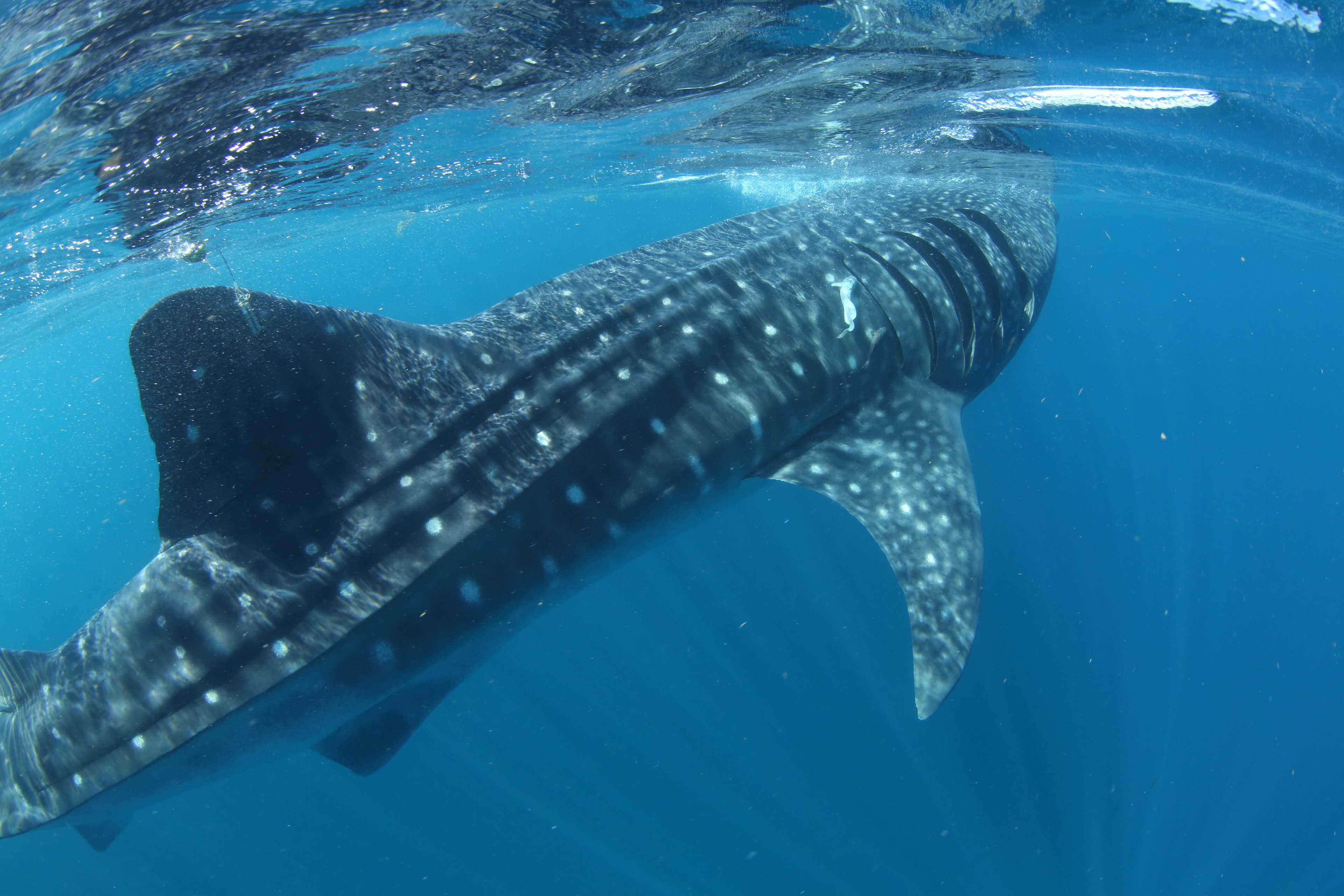Rio Lady is a whale shark (Rhincodon typus) and a swimming superstar. By following her movements with different trackers for almost two decades, including a record-breaking four-year streak, scientists have learned a lot about whale sharks and their habits.
For such big fish – Rio Lady is nearly 8 meters (26 feet) long – there is actually still a great deal that we do not know about whale sharks. “There’s a lot to learn about where whale sharks go to give birth” Daniel Daye, lead author of a recent study describing Rio Lady’s movements, told IFLScience. We also know little about their social and mating behaviors.
One of the things we do know, however, is that once a year, between July and August, a large whale shark gathering occurs off the coast of Isla Mujeres, across from Cancùn in the Gulf of Mexico. Up to 400 individuals have been spotted there together, and they are there to feast. The waters at that time of year are full of the freshly spawned eggs of tunny fish, a banquet for our big fish. Whale sharks are filter feeders, swimming near the water surface with their mouths agape, letting plankton, eggs, and little fish flow in.
It was here, near Isla Mujeres, that Rio Lady was most recently GPS-tagged in 2018. From there, the researchers were able to follow her slow, far-ranging movements over the course of almost four years (with the first three years giving the most consistent recordings). Between 2018 and 2021, she covered at least 44,000 kilometers (27,340 miles) in the Gulf of Mexico. That’s more than the Earth’s circumference!
Her movements revealed that she not only enjoys the yearly banquet of Isla Mujeres, but consistently divides her year between three different hunting areas in the Gulf of Mexico. The other two are the area across from Veracruz and the northern region of the gulf.
Interestingly, the feeding ground gatherings seem to be somewhat age and sex-specific, with the Isla Mujeres being visited predominantly by young males (Rio Lady is an exception here). It is not known yet if the other feeding grounds that Rio Lady visits are dominated by other groups. “We are working on a follow-up paper to look more at the population-level movements for [a group of 20 male] whale sharks,” said Daye.

Whale sharks are slow movers, but can still cover some impressive distances.
Image credit: University of Rhode Island
Rio Lady’s movements during the winter months were not recorded in the current study. The type of tracker that was used was programmed to only transmit when the tracker, attached to her dorsal fin, was outside the water. This suggests that she didn’t surface in the wintertime.
In the winter of 2006, using a different type of tracker, she was recorded swimming 7,772 kilometers (4892 miles) in 150 days to the mid-Atlantic, near the Brazilian Saint Peter and Saint Paul Archipelago. She might have undertaken the long journey to give birth there.
In the current dataset, “the timing of movement back into the Gulf of Mexico from somewhere southern suggests that there was some similar movement pattern during this time,” explained Daye. Whether this journey happens as regularly as her movements within the Gulf is still unknown.
The whale shark population has been decreasing worldwide, with a roughly 63 percent decline over the last 75 years. The cause for the decline is in part fishing, either as direct targets or as bycatch. Because they feed near the surface, they are also at risk of being struck by boats and propellers, and as filter feeders, are at risk of ingesting microplastics.
As a result, whale sharks are now an endangered species and research like the current study into their movements and habits is key for informing conservation efforts.
“With respect to the sharks near Isla Mujeres, the Mexican government has established two nature reserves near the area to protect whale shark habitat. Regulations surrounding the tourism industry try to prevent tourists from overwhelming the sharks and adding unnecessary stress,” Daye told IFLScience.
“Other studies have compared shark movements to shipping corridors and identified areas that show potential for a higher risk of collision. Speed limits, like those enacted in some areas of the US to protect whales, could be implemented to reduce risk to whale sharks too,” Daye continued.
“Since we identified three regions of habitat use that occur during different times of year, this could help to determine when/where some of these regulations get implemented, and to ensure that they are implemented effectively.”
You can track the movements of Rio Lady and other whale sharks here. Some tags are still active!
This study is published in Marine and Freshwater Research.
Source Link: Whale Shark “Rio Lady” Tracked For Record-Breaking 4 Years In Gulf of Mexico